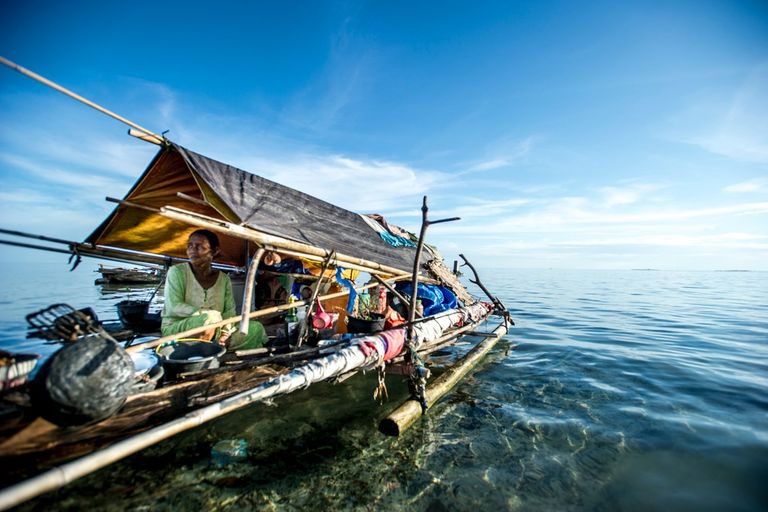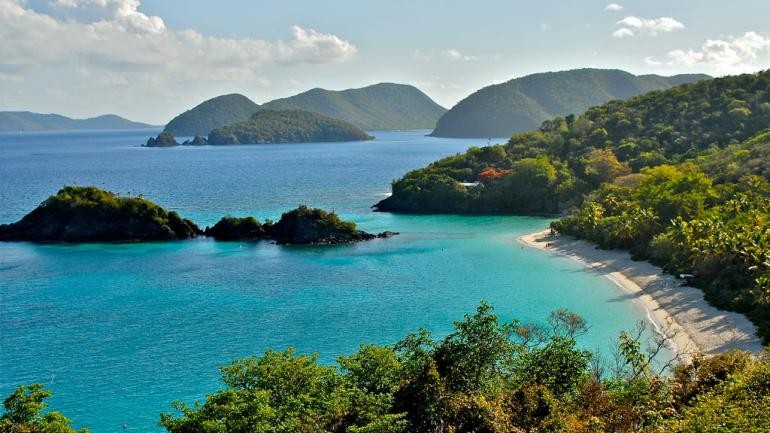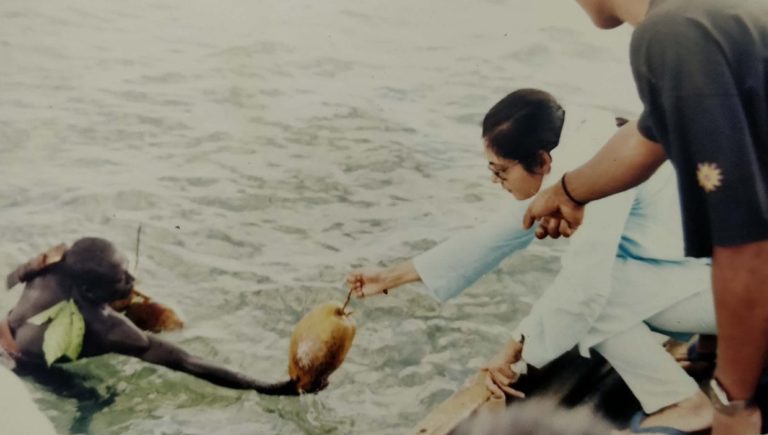Whether it’s oppressive heat, freezing temperatures or violent storms, mankind has been learning how to brave the elements since time immemorial. It’s just the way we are and the reason why mankind has survived for so long. However, one thing we probably haven’t figured out is how to get along without oxygen.
Oxygen is an absolute necessity for humans (hence mermaids exist only as mythical beings). Nonetheless, one tribe in Malaysia is pretty close to getting along without it. Scientists from around the world are trying to understand the incredible adaptations of these people, which seem to dwarf even Ariel, Walt Disney’s Little Mermaid.
The idea of life in the water is incredibly romantic. Those stunning photos of tiny houses seemingly floating on the crystal clear sea are constantly admired. However, since most of us are pretty set on living on dry land, the question arises: who actually lives there?

While pictures make it seem like this way of life is the ultimate oasis, living on the water brings its own special challenges. The Banjau people, who have lived in and on the water around Asia for thousands of years, know what problems it actually brings.

Several legends tell how the Banjau spend 60% of their lives in the water. In one such legend, the “sea nomads” are sent to rescue a princess. When they failed to bring her back, they stayed in the water to avoid the king’s wrath.

Another tale tells of a giant stingray that took them out to sea. In whatever version, the end is always the same: a group of people living and working in the ocean. Logistically, there are many things they have to accomplish.

Most members of this tribe, scattered throughout Asia, have no home on the coast at all. Essential to this lifestyle are their small boats called “Lepa-Lepa”. The most incredible aspect of their life on the waves, however, are the houses they build.

Instead of having a traditional foundation, their homes are famous for being built on stilts and rising just above the water’s surface. In the event of a major storm, these people will temporarily evacuate and stay on shore. Otherwise, they spend their lives in the sea.

In their unique situation, they truly live off of what the ocean has for them. The Bajau have become skilled divers and fishermen in order to survive. They mostly use spears to catch fish as well as their diving skills to scour the ocean floor.

(Photo Credit: National Geographic Channels/Duncan Fairs)
Therein lies both the problem and the solution for this unique group. Being an experienced fisherman is certainly great, but you are still subject to the laws of physics just like any other human being. One of the most basic of these is the very regular need for fresh oxygen.

This is a problem for humans, as diving too deep can cause blood vessels in the lungs to burst, often resulting in death. How on earth do these quasi-superhuman swimmers master the ocean as if they had gills?

Charles Darwin, with his theory of evolution, would surely be thrilled to see how this ethnic group evolved to thrive in their oceanic environment. So too was geneticist Melissa Ilardo impressed when she studied Bajau behavior. She conducted a study on them to understand what gives them the abilities to do what they do.

Surprisingly, the physical element that controls how long we can hold our breath underwater is not our lungs. All those breath-holding contests against friends that you may have lost a few brain cells to in the pool in your youth were controlled by another organ: the spleen.

A study was conducted on marine mammals such as seals, and according to the findings, the size of the spleen plays the central role. Oddly enough, this organ plays an important role in supplying the body with oxygen when it is lacking. It hoards extra oxygen in case of emergency.

The larger the spleen, the longer we can hold our breath underwater. It is almost unbelievable that some members of this tribe held their breath for almost twenty minutes. At the end of her study, Ilardo was almost stunned by the results.

She compared the spleen size of Banjau tribal members with that of randomly sampled mainland residents. The oceanic tribe had spleen sizes about fifty percent larger than those of mainland residents. Melissa Ilardo confirmed her theory and also made another unexpected discovery.

While studying the DNA of the Bajau people, Ilardo discovered a specific gene called ‘PDE10A’. This particular coding gene controls thyroid hormones and has been linked to the size of the spleen, providing DNA evidence for the tribe’s adaptation.

Melissa Ilardo and her team of researchers don’t know exactly when the Banjau once left the mainland and began this evolutionary change, but it’s estimated to have started about 15,000 years ago. Aside from explaining the wonder of the Banjau, there may be a broader use for these findings.

In the world of trauma medicine, oxygen levels are a major concern. Understanding these adaptations that allow for a reserve of oxygen in extreme situations could have practical implications for doctors. The Banjau strain could coincidentally help save lives.

The tribe has been doing this for centuries, but the modern world is challenging their way of life. Members of the tribe have no citizenship on the mainland, and industrial fishing has made it harder for them to catch fish.

Unfortunately, the dangers of the 21st century have caused some members of the ancient tribe to abandon their maritime lifestyle and head for a life on dry land. Our rapidly changing world today requires them to adapt not only to deeper waters, but also to modern life.

Whether the fate of the Bajau may foresee their future life on land or continue to live at sea, the incredible evidence of human adaptation and evolution right before our eyes is compelling in any case. Looking at such tribes is crucial to our understanding of other cultures.

It is difficult to get to know remote peoples like the Bajau, whose culture is self-contained and completely unique with their island houses. Nestled between India and Myanmar, in the middle of the Bay of Bengal, are several picturesque islands. Despite their allure, however, visitors should approach with extreme caution.

The Indian government requires a visitor’s permit for any entry. Some of the islands in this archipelago are tourist magnets, and access is only allowed with appropriate documents. Others are prohibited altogether, such as North Sentinel Island, and for good reason!

While the indigenous tribes of the Andaman Islands have long fascinated anthropologists, they are less than pleased about intruders from the outside world – and they don’t just give visitors the cold shoulder …

Visitors must approach with extreme caution, as these tribes are considered the most dangerous and violent in the world. They prefer to have no outside contact and have already rejected many who tried to enter their territory.

Throughout history, anthropologists carefully organized visits, established friendly contacts and hopefully get the opportunity to learn more about these fascinating people. But the matter revealed a rather big problem …

All visitors, no matter how reserved or friendly-minded, were met with open hostility and extreme suspicion. Some visitors to the island were even killed.

Getting to know the islanders seemed impossible. But there was someone who wanted to change all that, and in the process change our understanding of the tribe.

Doctor Madhumala Chattopadhya wanted to achieve what so many others had lost their lives for before. But the way there was not going to be easy for you.

As a young girl, Madhumala was fascinated by the indigenous tribes off the coast of her native India. She was at the top of her class and later studied anthropology at the University of Calcutta. As she immersed herself in the world of books, these tribes were the focus of her attention.

In 1991, Madhumala followed her dream to make friendly contact for the first time. She was working as an employee of the Anthropological Survey of India [Indian Anthropological Institute] at the time. Together with a 13-member team, Madhumala set out to make a connection that no one had ever survived before.

But Madhumala knew that she and her team would have to do something different to win the tribe over – something that other visitors had not tried. So she brought coconuts!

As their team’s boats approached the shore, the researchers began tossing out coconuts as a peace offering to the tribe. Not long after, some of the more curious members of the tribe waded into the water to take the coconuts.
Meanwhile, the tribal members stood on the shore with bows and arrows, wary of the visitors. The latter continued with the coconuts, and finally Madhumala was able to enter the water and personally present the gifts to the tribal members.

And another factor contributed to Mudhamala’s groundbreaking contact with the tribe: she was a woman! On her next visit in the same year, she led an expedition ashore to the Jarawa tribe’s territory, making history once again.

Jarwa women spotted Madhumala, the only female member of their team, on the boat and called out to her, “Milale chera!” According to the translation, it means “Friend, come here!” And they broke into a spontaneous dance. She was the first woman to visit them, and they welcomed her!

The tribal women approached Mudhamala and looked at her hair and skin. But then she made a bold move that could have ended in complete disaster. Namely, she embraced one of the natives. Miraculously, her efforts paid off. The tribe responded with goodwill!
The tribe had never before turned to an outsider as they did now with Madhumala. They let her help with the housework, and she was even allowed to hold their children.

They cultivated an intense trust and allowed Madhumala to enter their huts, which was another historic first. She shared food with the tribe and offered medical assistance. They allowed her to care for their wounds and act as their doctor.

Despite her monumental advances in communication and anthropological discoveries, Madhumala is not really considered one of the great anthropologists in history. She lived among one of the most dangerous and mysterious tribes in the world, but her legacy remains a hidden gem for most of the world to discover.

In early 2019, she continued to work for the central government in the Ministry of Social Justice and Social Development. Madhumala’s texts on this secret tribe are considered standard for study in universities worldwide.

There are some places on this planet that even the most intrepid explorers can never visit. While access to them is actually not necessarily difficult, they are completely off-limits. From islands like North Sentinel to top-secret government facilities, these places are completely off-limits to tourists.






